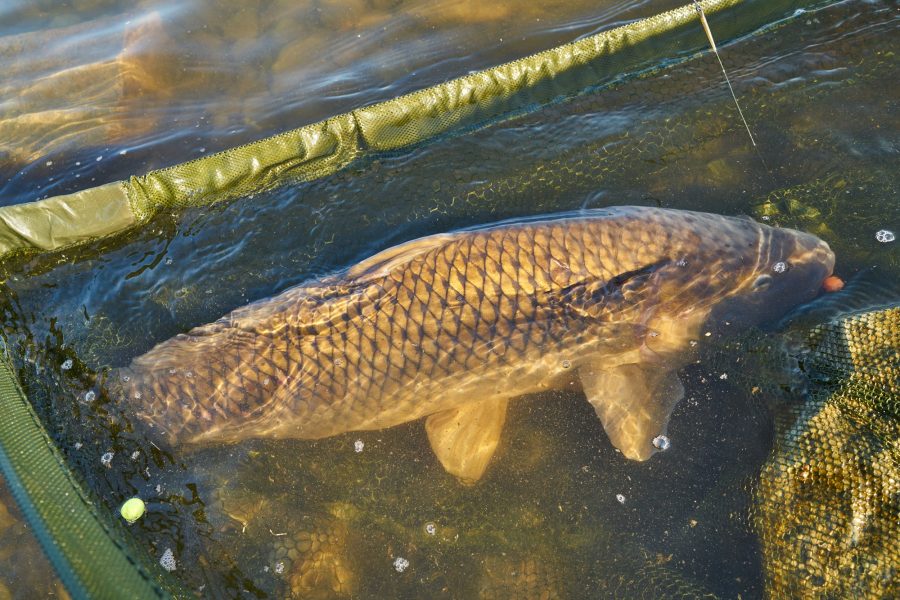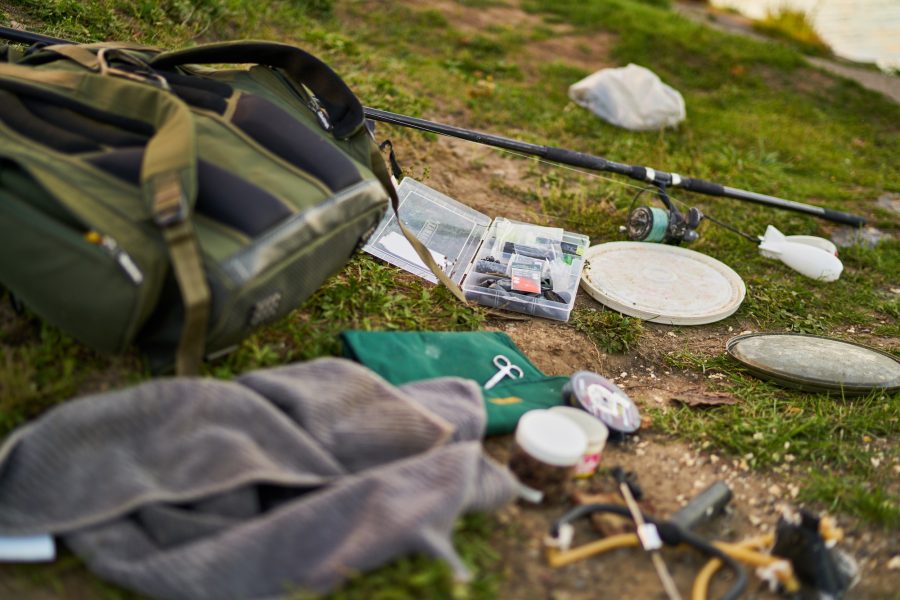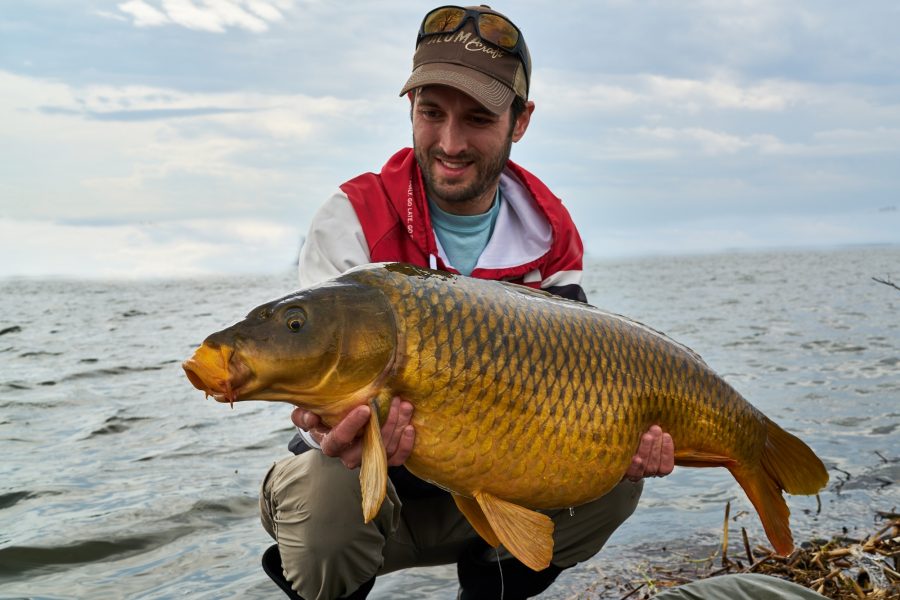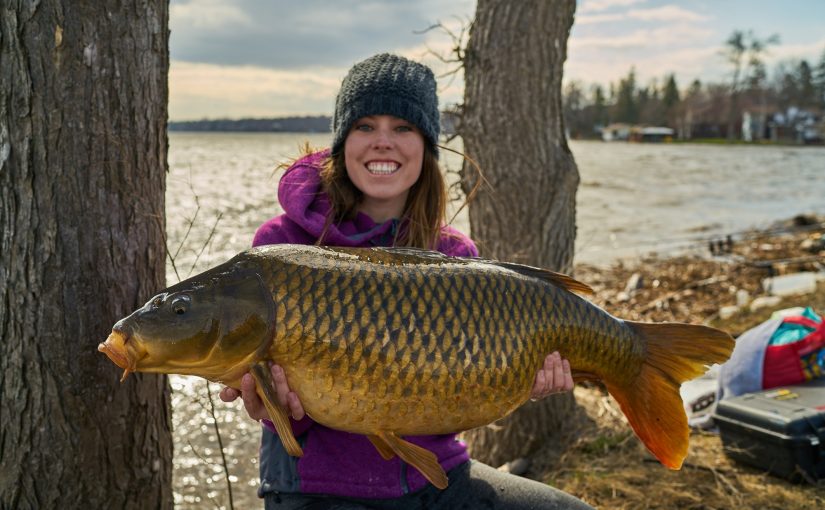Today’s post comes from year-round multispecies angler and writer Ashley Rae of SheLovesToFish.com.
Have you ever targeted Common Carp?
When most people see a carp for the first time, they’re blown away by their size. Carp are one of largest fish species roaming our waters here in Ontario and as you can probably tell by the big smiles, they’re an absolute blast to reel in! They are open to be targeted year-round and are typically found in relatively shallow water throughout the open water season.
As such, carp are one of the first species I target in the spring while I wait for other seasons to open. There’s nothing quite like starting off the open water season chasing fish that can average over 20 pounds!

I’ve had the opportunity to travel to various parts of Ontario to target carp over the years and can attest to the fact that we have a world-class fishery that is surprisingly overlooked by many anglers.
Who wouldn’t want to go out fishing and potentially catch multiple fish over 10, 20, or even 30 pounds in a single day?
Some of my favourite bodies of water for carp include: Lake Ontario, Bay of Quinte, St. Lawrence River, and the Rideau River. Although some anglers enjoy targeting carp by stalking them and sight fishing from a boat, they’re primarily targeted from shore using set lines, which makes them very accessible.
Shore fishing offers the advantage of being able to bait an area (also called chumming) to lure carp in where they’ll typically stick around and feed until all the food is gone. With their downward facing mouths, carp feed on bottom for insects, vegetation, benthic worms, and crawfish.
There are many types of presentations for carp and although I’ve been successful on various techniques over the years, I’ve hardly even scratched the surface on what’s available.
Carp can be caught on basic gear but considering the size of these fish, it’s best to use the equipment designed specifically for them. Carp rods are typically longer (9 to in length), offering better control over the larger fish, as well as casting greater distances. The reels are large, holding lots of line for the powerful runs they take. Typically, heavier braided line is used. Over the past couple years my favourite presentation has been the 360 rig.

My bait of choice on this rig has been a pop-up (a little round flavoured ball that floats just a few inches off bottom where the carp can see and smell it). This presentation has been great in locations with soft or muddy bottom where regular baits sink down often out of sight. Pop-ups can also work great as the season goes on and the weed growth picks up.
My most memorable day of carp fishing took place this spring when my fishing partner, Eric, and I landing 18 carp in just a few hours one afternoon!

It was our first day of carp fishing this season, and we tried a new spot on the north side of Lake Ontario. The northern waters warm quicker as they receive the most amount of sunlight. This particular area, a sheltered bay, had a nice warm south wind blowing the surface water which helped the water warm up even faster. At this time of year, carp are feeding well as they will soon spawn during late spring/early summer.
The carp were definitely on the feed and we were able to hit them at the right time resulting in an action-packed afternoon.

I landed my biggest ever carp at , and I am still smiling about it! Eric also landed a monster 31-pounder and a 28-pounder too.
After an amazing day with giant fish, what’s left to do? Daydream until the next adventure and chase an even bigger personal best!
Happy carping!
*NOTE* While Common Carp were introduced to Ontarian waters over 100 years ago, they are actually an invasive species (much like their more infamous cousins, invasive carp). Common Carp can have extremely negative impact on ecosystems, destroying spawning sites for other fish, decreasing water quality, and competing with native species .
For these reasons, it’s extremely important that anglers not allow Common Carp to spread to new waters. Help protect our water quality, our fisheries and aquatic ecosystems by dumping your bait bucket at least 30 m from the water, cleaning your livewell, and never transporting live fish.
Going fishing? Here’s three resources every angler should be familiar with before heading out on the water:
Ontario Fishing Regulations Summary
An annual guide to the rules and regulations for recreational fishing in Ontario. It contains information about recreational fishing licences, open seasons and catch limits, as well as up-to-date fishing regulations for each fishing zone.
Use this guide to help you identify the types and amounts of fish that are safe to eat from more than 2,400 fishing locations.
Invasives Species — Angler Action Plan
Don’t move live fish! When foreign species invade our waters, or native species are moved beyond their natural range, they damage ecosystems, reduce fishing quality and biodiversity and can spread disease. Keep our waters healthy and free of invasive species.
